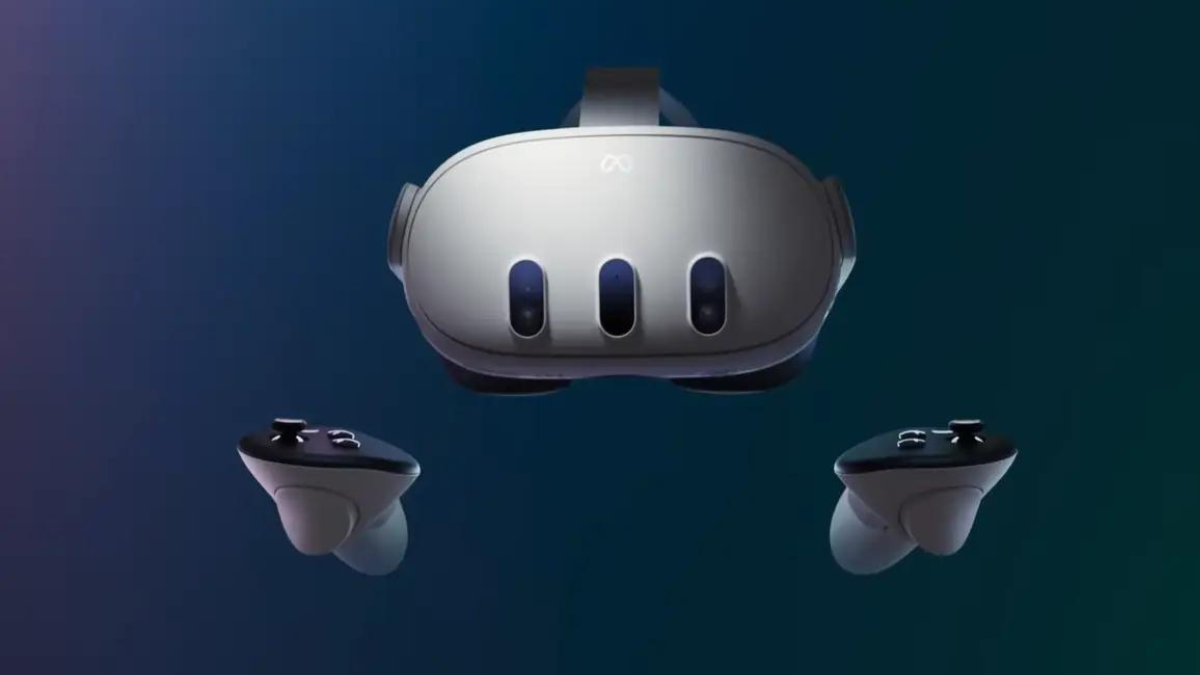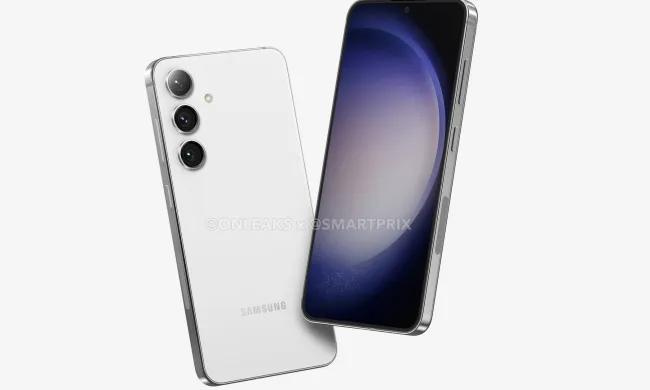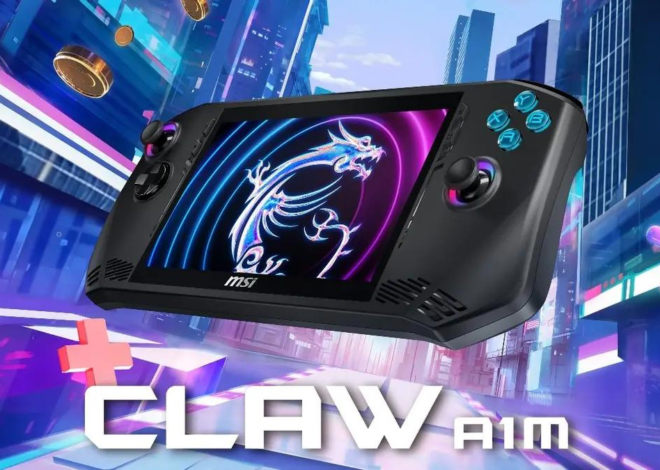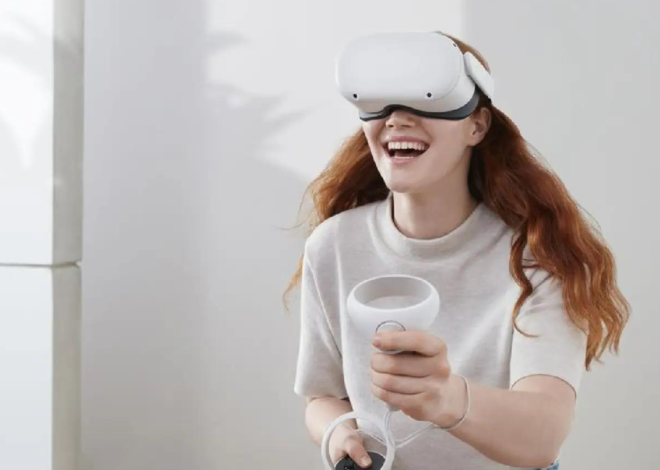
My Life With the Meta Quest 3: The Best VR Headset for the Moment
There’s no need to upgrade yet, but this is clearly the best you can get for $500 (even if it’s not perfect).
| LIKES | DISLIKES |
|---|---|
| Crisp high-resolution displays | More expensive than Quest 2 |
| Improved new processor | Few unique apps and games at launch |
| Mixed reality with better color cameras | Hard to remove straps sometimes |
| Self-contained, no extras needed | Still only 2-3 hours of battery life |
NOTE: Want to Purchase Meta Quest 2??? Click Here For Amazon Price
As I stroll through my living room, I find myself engaged in a whimsical battle against miniature extraterrestrial invaders who playfully emerge from behind my sofa and even seem to breach the walls. Each time I fire my imaginary shots, they create mesmerizing openings in my home, revealing an otherworldly landscape beyond. To my amusement, a tiny spaceship has seemingly landed on my plush carpet. Meanwhile, my wife remains absorbed in her book, blissfully unaware of the intergalactic skirmish unfolding right under her nose.

Welcome to the future of technology right in your own living room with the Meta Quest 3 headset! This innovative device seamlessly blends virtual reality with live camera feeds of your everyday surroundings, creating an immersive mixed-reality experience. It’s a groundbreaking trick that many headsets, including Apple’s Vision Pro, will soon offer, although Apple’s version comes with a hefty price tag of $3,499, while the Meta Quest 3 comes at a much more affordable $500.
It’s hard not to feel a sense of excitement about how far we’ve come since 2018 when the Magic Leap was pioneering the dream of augmented-reality glasses. What sets the Meta Quest 3 apart is that it’s not just a development kit; it’s a consumer product that families can now have right in their homes. You can almost picture kids all over, delightfully causing chaos in living rooms as they explore this incredible new frontier of technology.
The Meta Quest 3, much like its predecessor, the Quest 2, is indeed primarily a VR headset. While it offers significant improvements in various aspects like graphics, display, lenses, and controller haptics, the decision to upgrade depends on your individual circumstances.
Iterative upgrades in technology can be challenging choices. Do you stick with your current setup, or do you take the plunge and invest in the latest model? VR has come a long way, and many households now have the Quest 2, thanks to Meta (formerly Facebook) effectively turning VR into something akin to a Nintendo Switch gaming console. The Quest 2 has been a favorite and an affordable option since 2020.
The Quest 3 represents a notable step up in terms of hardware improvements, including better visuals and mixed reality capabilities. However, it’s worth noting that the software experience doesn’t differ significantly from the Quest 2, except for a handful of specific apps and games.
In my estimation, if you already own a Quest 2, you may not urgently need to upgrade to the Quest 3 at this moment. However, as time progresses, the Quest 3 could become more compelling, particularly if Meta continues to develop new apps and games that enhance the VR experience. The ultimate decision will depend on how interested you are in these evolving VR possibilities and how Meta continues to shape the VR landscape in the coming year.
Mixed reality: A camera explosion
The Meta Quest 3 takes the mixed reality experience to the next level, building on the limited capabilities of the Quest 2. With its improved color cameras and a depth sensor similar to the one found in Apple’s iPhone and iPad, it can create a more detailed and immersive mixed-reality environment. This depth sensor allows the Quest 3 to scan and recognize the room’s boundaries, including walls, ceilings, and furniture. It then overlays a grid-like mesh to map out the dimensions of the space, enabling you to use larger and more complex play areas while superimposing VR graphics onto your real surroundings.

While the results are promising, there are some limitations to consider. The color cameras on the Quest 3 are better than those on the Quest 2 and even the pricier Quest Pro, but they may not match the quality of the Apple Vision Pro headset’s cameras. They are, however, sufficient for tasks like navigating your environment and even reading text on your phone or watch, although with some effort.
One standout feature of the Quest 3 is its use of the Qualcomm Snapdragon XR2 Gen 2 chipset, which offers enhanced graphics, improved camera support for mixed reality, and overall better performance. This hardware upgrade holds significant promise, although its full potential may not be evident until more applications and experiences take advantage of it.
Regarding mixed reality graphics, Quest 3 does a decent job of layering virtual elements into the real world to create convincing effects. However, it’s not without its quirks. Virtual objects can sometimes appear to run “behind” recognized physical objects and furniture that have been meshed, leading to occasional odd overlaps. Achieving a seamless mixed-reality experience also requires ample space and clean, uncluttered walls. In practical terms, you might find yourself contending with virtual zombies that seem to move through your sofas, TVs, and bookshelves, rather than around them.
Also Like | Meta AI Assistant and Facebook-Streaming Glasses Revealed
Mixed reality offers the advantage of being forgiving when it comes to cluttered spaces. It allows users to scan virtually any room as a play area and then configure the mixed reality environment to navigate around any messy areas. I personally experienced this in my own living room and found it quite convenient. With the headset on, I didn’t need to worry about potential accidents because the headset provided me with a better view of my surroundings.
But what is mixed reality actually used for? That’s the question. At the moment, there are a few entertaining but somewhat gimmicky games that incorporate mixed reality elements, making it seem like virtual objects are present in your physical space. Additionally, there are creative applications, some of which are still optimized for the Quest Pro, which offer creative tools and designs that appear to float within your actual surroundings. For example, there’s Painting VR, which simulates a virtual easel, or apps like Figmin XR that enables you to paint in the air. A tribe is a DJ app that allows you to see your real environment while mixing music, and the innovative PianoVision can teach you how to play the piano by recognizing your table taps. Some of these apps function solely with hand tracking, although this can sometimes be a bit glitchy, or with the Quest’s controllers.
Apple is making a significant push towards an all-encompassing mixed reality platform with Vision Pro, featuring a consistent interface based on eye and hand tracking. Meta, on the other hand, sits in between VR with controllers and a hand-based interaction system. Notably, the Quest 3 does not feature eye tracking.
Crisp and clear display
The Quest 3 may not deliver groundbreaking visuals, but it’s unquestionably a notable improvement. With an enhanced resolution of 2,064×2,208 pixels per eye, it outperforms the Quest 2, PlayStation VR 2, and Quest Pro. While these are LCD displays, they offer vibrant and sharp imagery, making text and details easily readable. While it doesn’t reach the retina-like resolution of Apple’s Micro-OLED Vision Pro, it surpasses most other mainstream VR headsets available.
Meta’s adoption of more compact pancake lenses is a game-changer. These lenses offer exceptional clarity, and the expanded field of view makes it feel less like peering through a small window. This improvement is particularly valuable for mixed reality experiences and working with virtual monitors from your computer, a feature the Quest has offered for years. The baseline 90Hz refresh rate can also be bumped up to 120Hz, aligning it with the standard for existing VR hardware.
Regarding movie watching, the Quest 3 offers a noticeable improvement in video quality. It’s my preferred choice among midrange VR headsets for watching shows and cinematic VR content. Immersive 3D cinematic videos, such as Felix and Paul’s Space Explorers: The ISS Experience (filmed in space) or David Attenborough’s First Life VR video, look impressive. However, when it comes to 2D movies, it still falls short of matching the experience of a high-quality HDR TV. The only VR displays that have ever come close to the “cinema-quality TV” experience for me are Varjo’s XR-3 and Apple’s Vision Pro demo, both of which are high-end, expensive devices.
Audio remains unchanged, with sound emanating from speaker holes in the head strap, which still delivers decent audio quality. There’s also the option to use a headphone jack. However, it’s worth noting that others in the room can hear what’s happening in your VR games if you’re playing in the same space as them.
Glasses-friendly design and fit

The Quest 3 headset, while more compact than its predecessor, the Quest 2, may not immediately strike you as significantly smaller when placed side by side. In terms of weight, they feel quite similar, and both come with elastic head straps.
However, the Quest 3 does bring some notable improvements. For instance, it offers a more versatile custom fit for your eyes with an adjustable wheel, unlike the Quest 2. Additionally, the included black plastic face mask can be pulled in and out to accommodate glasses wearers better. While it worked well for my chunky glasses, those with wider frames might still find it a bit snug. Adjusting the plastic sides can be a bit tricky and awkward at times. An alternative option is Zenni’s prescription lens inserts for the Quest 3, which I plan to try soon.
Regarding the included elastic head strap, it does the job but doesn’t excel in comfort. I found that Meta’s Elite strap (priced at $70) provided a better fit for me. However, the process of removing and attaching head straps, as well as the black face piece, remains somewhat cumbersome. Detaching the plastic straps from the arms felt delicate, and unsnapping the black face piece was similarly concerning. It would have been more user-friendly and elegant if the attachment process resembled the simplicity of attaching smartwatch straps.
Better version of Quest 2’s controllers
The Quest 3 has introduced a new set of controllers called the Touch Plus controllers. These controllers have undergone a redesign, removing the plastic rings that were present on the Quest 2 controllers. This change makes them more portable and potentially less prone to damage if accidentally bumped into furniture. However, the overall shape and grip of the controllers remain unchanged, with the same comfortable size, button layout, and thumb-rest area.

One notable difference is that the controllers still rely on AA batteries for power. While the exact battery life of a single set of batteries is yet to be determined, Quest 2 controllers were known for their impressive longevity. Alternatively, users have the option to purchase special contactless rechargeable batteries along with a charging dock, although this accessory is sold separately for $130. The battery compartment of the controllers features contact pins, which could open up possibilities for third-party accessories that offer similar charging options.
Perhaps the most significant improvement in the Quest 3 controllers is the enhanced haptic feedback. The vibrating feedback on the Quest 2 controllers was not particularly impressive. In contrast, the Quest 3 controllers provide more subtle and nuanced feedback, capable of delivering precise taps and rumbles. While it may not match the haptic capabilities of the PlayStation VR 2 controllers, it is a promising step forward in immersive gaming experiences.
Phone is required, but a PC is optional
The Quest 3 retains its compatibility with PCs, as is the case with other Quest headsets. This versatility adds significant value to the device. However, it’s worth noting that Meta is shifting its focus towards standalone software experiences. To fully harness mixed reality and other graphical advantages, users will often rely on applications from Meta’s own app store.
For the purpose of this review, I’m primarily focusing on its standalone capabilities. The Quest 3 eliminates the need for a PC or game console entirely, making it a self-contained gaming and immersive experience. However, to get started, you will need to pair the headset with a mobile phone app. This app serves as a hub for managing settings and even allows local game streaming, enabling friends or parents to see what the person using the headset is experiencing in real-time.
Additionally, it’s worth highlighting that you can capture mixed-reality game footage directly within the phone app. This feature can be incredibly useful for sharing exciting moments with friends and creating engaging content.
Also Read | Google launches Pixel 8, smartwatch with new AI feature
Accessories and upgrades: More storage, a charging dock, and straps, but what you need most is a case
The Quest 3 is available at a starting price of $500, which includes the controllers and a USB-C charging cable in the package. However, there are options to customize and upgrade your experience to fit your needs.
The base Quest 3 comes with 128GB of storage, which should suffice for most users since VR app sizes typically range from a few hundred megabytes to around 15GB. Keep in mind that as VR apps with improved graphics become available, download sizes may increase. For those who plan on accumulating a substantial library of VR apps, the 512GB storage option is available for $650. If storage ever becomes an issue, you can always delete and re-download apps as needed.
During testing, I also explored some optional extras. Meta offers a $70 Elite strap, which attaches securely and provides an adjustable plastic headband similar to what was available for the Quest 2. While it’s a welcome addition, durability has been a concern in the past, so I hope this version holds up better.
There’s a $130 Meta-made charging dock that takes advantage of the Quest 3’s magnetic pins on the bottom, offering contactless charging for the controllers. It’s a convenient and efficient way to keep your controllers powered up, and it’s even preferred by some over the included charging dock with the Quest Pro.
Also Read | Pixel 8 vs Pixel 7: What are the differences?
The essential accessory you’ll want is a reliable case to protect your VR device from dust and sunlight affecting the lenses. Meta’s larger $70 case option may seem a bit pricey, but it provides ample space inside and ensures a snug fit for the controllers, even featuring a designated slot for the charging cable.
There are a few updates to the familiar Quest apps
A significant concern with the Quest 3 revolves around the availability of apps that can fully leverage its unique capabilities. For current Quest 2 owners, there might not be an immediate imperative to upgrade. The Quest 3 maintains compatibility with all Quest 2 software and operates on the same operating system. However, the selection of Quest 3-optimized titles remains somewhat limited at this stage.
In terms of specific titles, experiences like Samba de Amigo, a Sega rhythm music game, are somewhat underwhelming on Quest 3, although they introduce mixed reality elements that blend the real world into certain bonus levels. For instance, I found myself in a scenario where my office floor became a pool of lava, and a giant monkey tore the roof off—an intriguing but perhaps not game-changing addition. On the other hand, Red Matter 2 elevates its graphics to a level that rivals PlayStation VR 2 games, showcasing the Quest 3’s potential.
Some highly anticipated games like Assassin’s Creed Nexus, Asgard’s Wrath 2 (which is included free with a Quest 3 purchase), and Stranger Things VR are notably absent from the platform as of now. Additionally, it’s perplexing that killer apps like Beat Saber have yet to receive Quest 3 upgrades.
Also Like | Introducing Apple AirPods new features
Beyond gaming, Meta still faces challenges in enhancing productivity and app integration within the VR environment. While Office 365 is compatible with the Quest, and Xbox Cloud Gaming allows for 2D gameplay, Meta’s Horizon Worlds—a social platform for VR—seems to have its issues and is not prominently featured in the Quest’s preinstalled apps. This suggests that there’s still work to be done in making VR a seamless and engaging platform for productivity and social interaction.
Quest 3 is likely to offer the most affordable way to the future in the year ahead
The Quest 3 seems to be taking a somewhat different approach compared to traditional game consoles. It feels more like an incremental upgrade, similar to how smartphones or tablets receive updates. In the future, we can expect more apps to receive Quest 3 enhancements, and there might be the introduction of new features, such as onboard AI, as Meta has hinted. Improved hand tracking could also be on the horizon. Meta has a track record of evolving the Quest and Quest 2 with experimental software features, and the Quest 3 is likely to follow suit.
Looking ahead, the tech landscape is brimming with potential changes. Apple’s Vision Pro, for instance, is aiming to revolutionize mixed-reality computing, although its high price tag may limit its accessibility. Additionally, Samsung and Google are expected to enter the mixed-reality hardware arena, potentially pushing the boundaries and integrating Google Play software support.
The question arises: will Meta find itself caught in the midst of these future changes, or does its offering stand strong as a versatile gaming console for your face, complemented by useful extras like fitness and productivity apps? The Quest 3 is likely to remain one of the most affordable mixed-reality devices for the foreseeable future, making it an attractive choice for those curious about the technology. However, as a next-generation game console for families, it may need more compelling software offerings to truly distinguish itself, although its improved display and graphics already make it a top choice for many.
Also Read | The Future of Motherboards: ASUS Introduces Next-Gen Designs for Intel 14th-Gen Processors
Features Summary of Meta Quest 3
| Feature | Description |
|---|---|
| Mixed Reality Experience | Blend virtual and physical worlds, transforming your home into various interactive spaces for gaming, workouts, socializing, and more |
| Graphics Processing Power | Powered by Snapdragon XR2 Gen 2 technology, doubling the graphics processing power of Quest 2 for lightning-fast performance and vivid graphics. |
| Display Resolution | Ultra-realistic 4K+ Infinite Display resolution for lifelike games with stunning graphics, creating a truly immersive experience. |
| App and Game Library | Access to the world’s best library with 500+ immersive apps, offering a wide variety of experiences and entertainment options. |
| Backward Compatibility | Enjoy all the games and apps from the Meta Quest library that you already own, thanks to the device’s backward compatibility feature. |
| 3D Sound and Audio | Enhanced 3D sound with clarity and bass performance, providing a 40% louder audio range than Quest 2 for a highly immersive audio experience. |
| Comfort and Personalization | Redesigned slim profile and customizable features for a personalized and comfortable fit, ensuring maximum enjoyment during extended gameplay. |
| Touch Plus Controllers | Redesigned controllers that offer realistic sensations, allowing you to feel like you’re actually interacting with the virtual environment. |
| Direct Touch Gestures | Explore without controllers, using hand gestures through Direct Touch technology, providing a more natural and intuitive way to interact. |
| Social and Sharing Features | Screen casting and in-experience recording features enable you to share your virtual reality experiences with others in real time. |
| Simple and Safe Setup | Easy, cable-free setup using a mobile device. Privacy features ensure a secure VR experience, and supervision tools maintain family-friendly content. |
| Age Restrictions | Meta Quest is suitable for ages 13 and above, ensuring age-appropriate content and experiences for users. |
While the Quest 3 may not change your mind about VR, it is definitely a better headset than the Quest 2.













